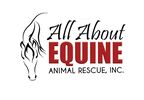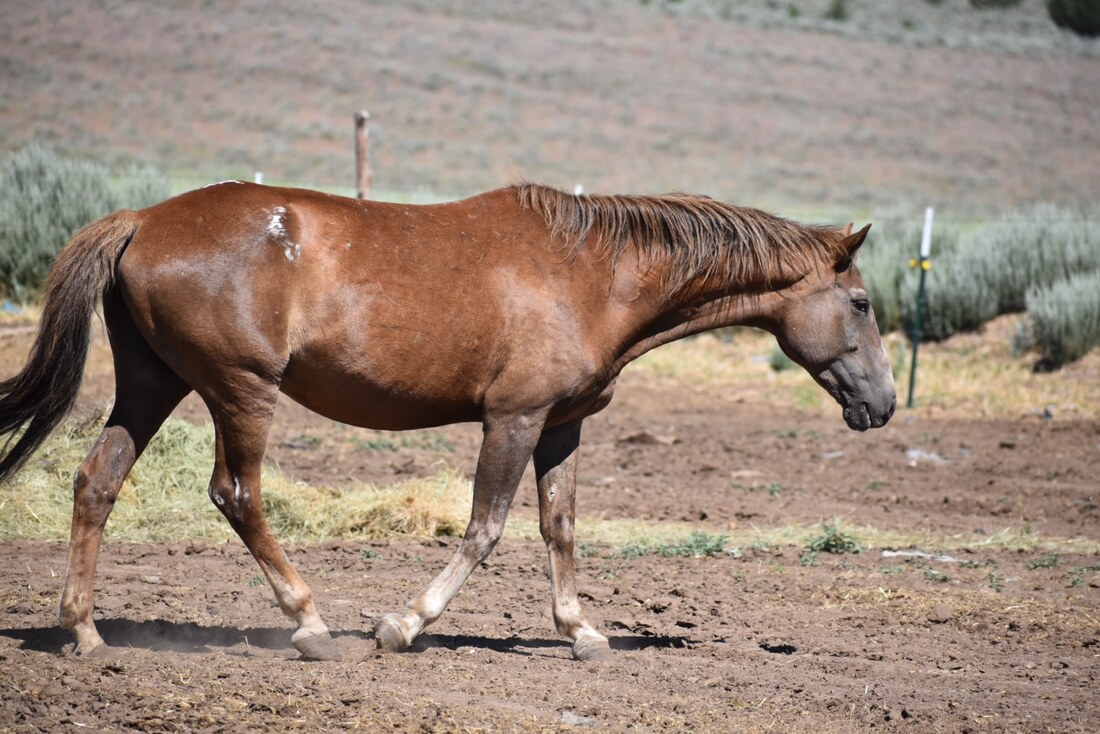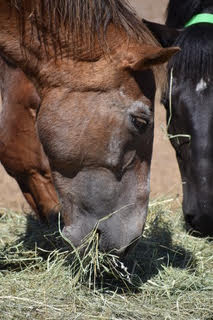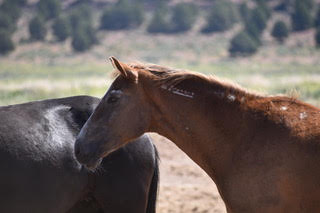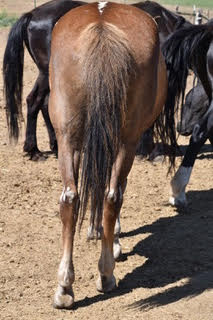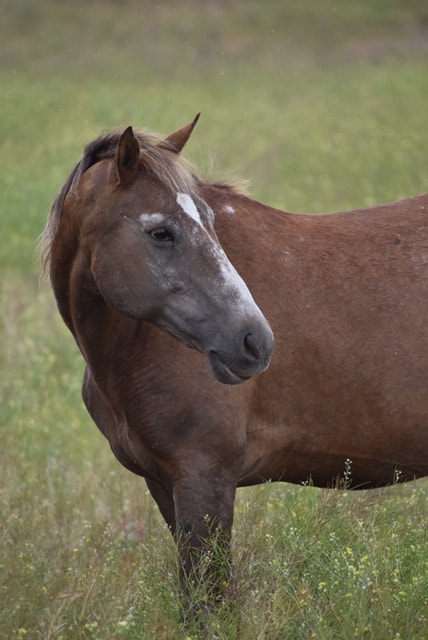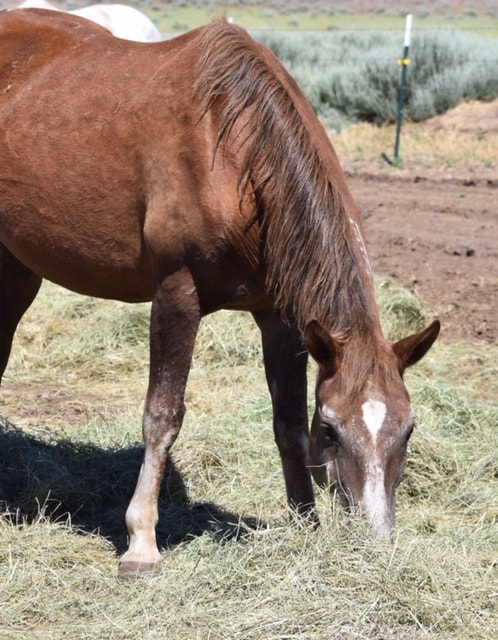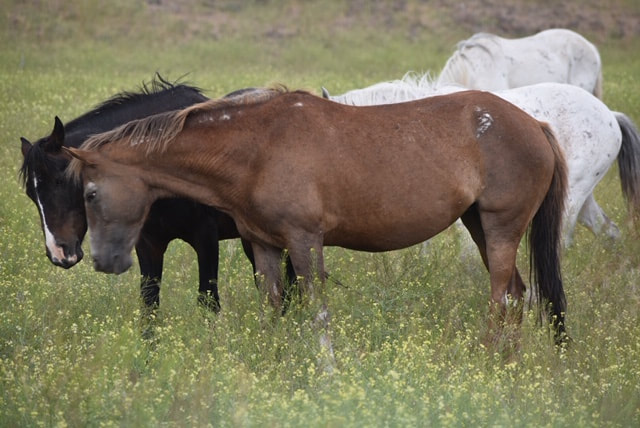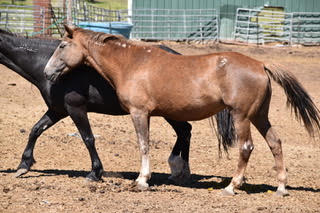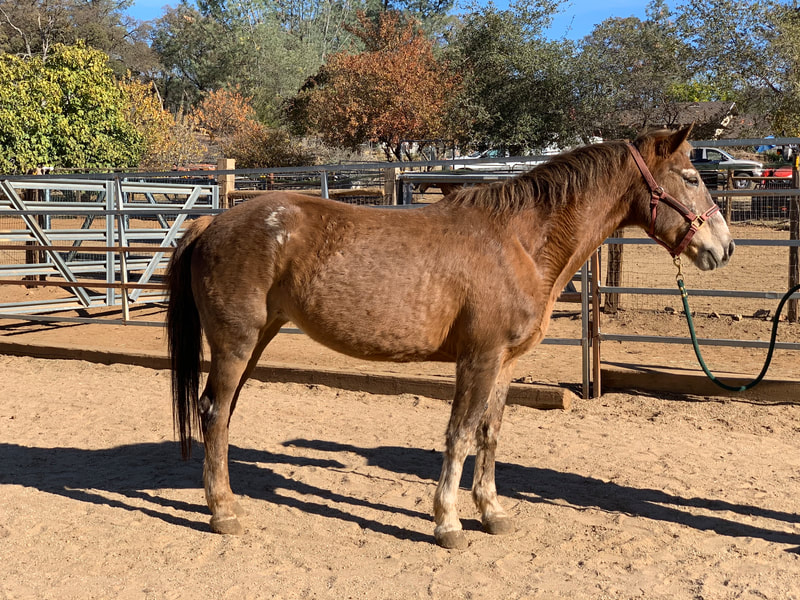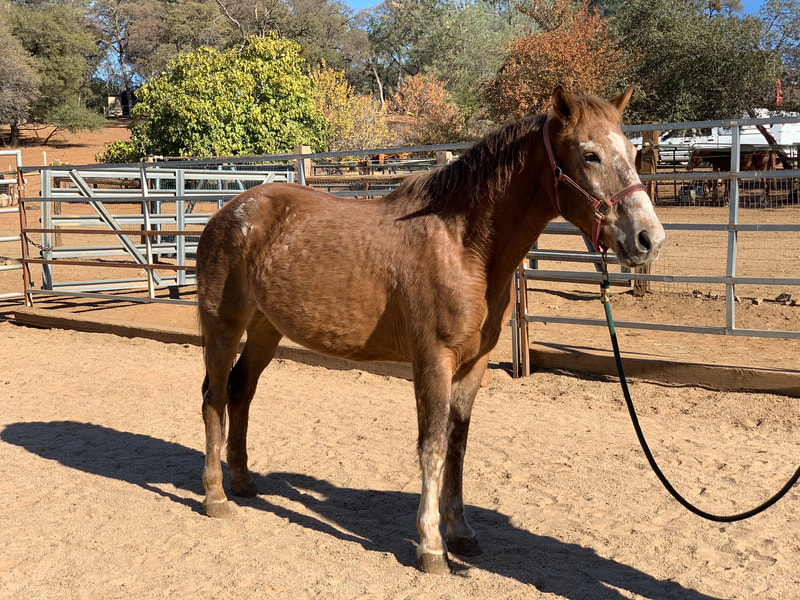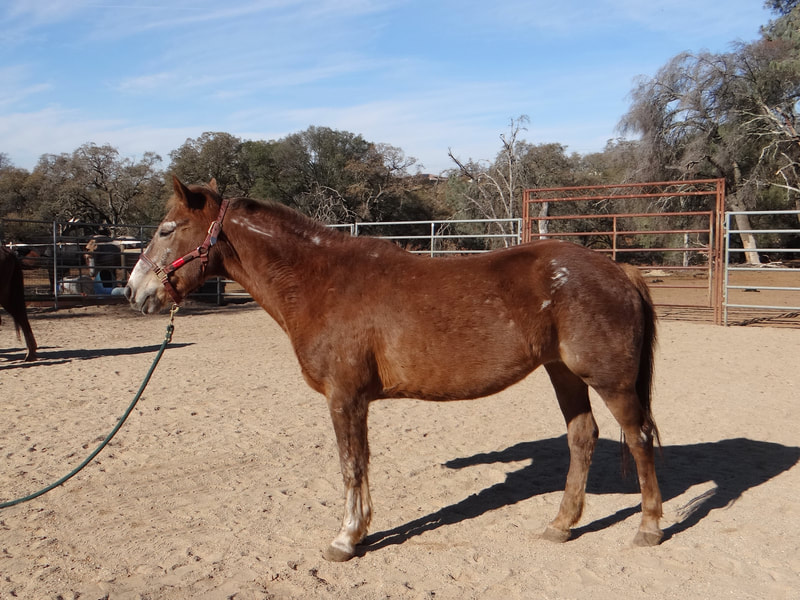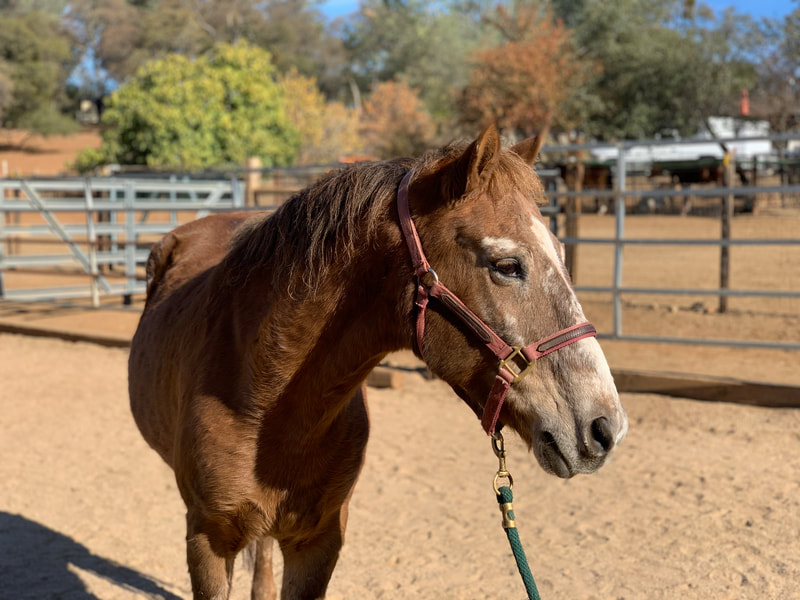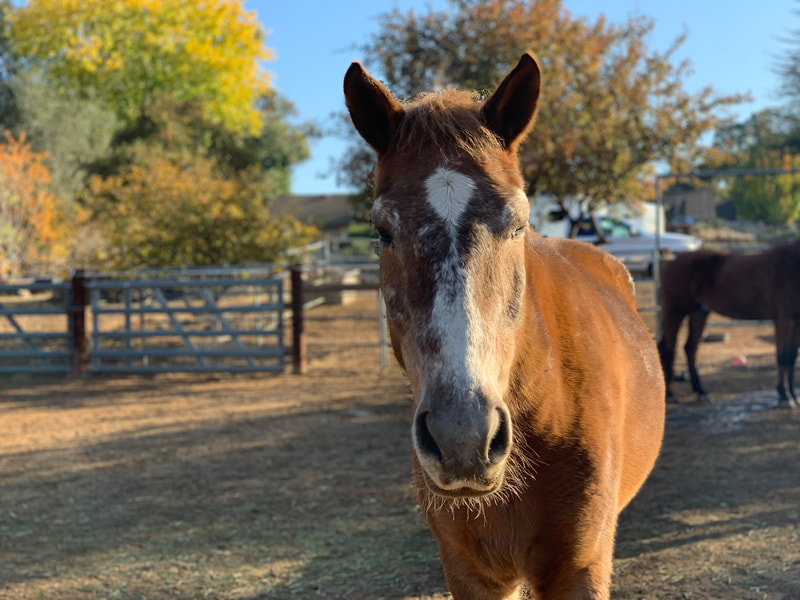Bonnie
Height: 14.3 hh (est)
Weight: 900 lbs (est)
DOB: 2001 (est)
Sex: Mare
Color: Sorrel
Breed: Mustang (BLM)
DNA: 1st Belgian Draft,
2nd Turkoman,
3rd Venezuelan Criollo
Adoption Fee: $550
Category: Non-Riding Companion Only
Weight: 900 lbs (est)
DOB: 2001 (est)
Sex: Mare
Color: Sorrel
Breed: Mustang (BLM)
DNA: 1st Belgian Draft,
2nd Turkoman,
3rd Venezuelan Criollo
Adoption Fee: $550
Category: Non-Riding Companion Only
Bonnie's Story
Some AAE welcomed Bonnie from the DreamCatcher Wild Horse and Burro Sanctuary in August of 2019 to support their ongoing herd reduction efforts after the long illness and passing of their Executive Director, Barbara Clarke in November of 2016. Bonnie is an older mare, and winters at DreamCatcher can be difficult. We were told Bonnie was placed in sanctuary at DreamCatcher after failing training attempts with five different trainers. She is not trained under saddle..
Bonnie a sweet and social mare, and she is also a moody, opinionated, obstinate mare, mostly enjoyable and sometimes not. She enjoys grooming and attention until she's doesn't, which is typically when asked to do something she'd rather not. Bonnie has Cushings and a substantial fly allergy. It's hard to keep her comfortable at times (she's very itchy and rubs). She gets a daily carrot pocket with her Cushings meds. A cooler climate would be ideal her. During summers, she is on an antihistamine twice a day, and it helps her tremendously. We have repeatedly tried fly sheets and masks, but she destroys them within days. Lycra fly masks have been a winner! Fly spray, war paint, and swat, they all help, but she needs them applied daily (once to twice a day) during fly season.
Bonnie is all mare. She's dominant around food, and she's bossy in a herd. She usually connects well with one or two other horses, usually the boys, and they usually have the perfect-love hate relationship.
Bonnie is current with hoof and dental care, vaccines and deworming, and she has a microchip. Bonnie needs daily meds for Cushings, and daily antihistamines and extra effort with fly prevention during fly season. Diet-wise, she is on an alfalfa/grass hay diet supplemented with daily senior pellets.
In general, there is a lot of activity around AAE including foot traffic in and out of paddock/pasture areas, mucking with wheelbarrows, grooming and care activities, weekly farrier visits. There are resident dogs, cats, chickens, cows, goats, a pig, and mini horses, as well as various wildlife including frequent turkeys, rabbits, squirrels, coyote, and deer in and around paddock/pasture areas. AAE is situated on the corner of a busy road with high speed vehicles, trucks, and sirens. Tractors are used in and around pasture/paddock areas, trucks deliver feed, and a squeeze is occasionally used for unloading hay. Horses at AAE are accustomed to a more active environment as opposed to a quiet/sterile environment. Some do fine, others will do better in a more quiet environment.
Bonnie a sweet and social mare, and she is also a moody, opinionated, obstinate mare, mostly enjoyable and sometimes not. She enjoys grooming and attention until she's doesn't, which is typically when asked to do something she'd rather not. Bonnie has Cushings and a substantial fly allergy. It's hard to keep her comfortable at times (she's very itchy and rubs). She gets a daily carrot pocket with her Cushings meds. A cooler climate would be ideal her. During summers, she is on an antihistamine twice a day, and it helps her tremendously. We have repeatedly tried fly sheets and masks, but she destroys them within days. Lycra fly masks have been a winner! Fly spray, war paint, and swat, they all help, but she needs them applied daily (once to twice a day) during fly season.
Bonnie is all mare. She's dominant around food, and she's bossy in a herd. She usually connects well with one or two other horses, usually the boys, and they usually have the perfect-love hate relationship.
Bonnie is current with hoof and dental care, vaccines and deworming, and she has a microchip. Bonnie needs daily meds for Cushings, and daily antihistamines and extra effort with fly prevention during fly season. Diet-wise, she is on an alfalfa/grass hay diet supplemented with daily senior pellets.
In general, there is a lot of activity around AAE including foot traffic in and out of paddock/pasture areas, mucking with wheelbarrows, grooming and care activities, weekly farrier visits. There are resident dogs, cats, chickens, cows, goats, a pig, and mini horses, as well as various wildlife including frequent turkeys, rabbits, squirrels, coyote, and deer in and around paddock/pasture areas. AAE is situated on the corner of a busy road with high speed vehicles, trucks, and sirens. Tractors are used in and around pasture/paddock areas, trucks deliver feed, and a squeeze is occasionally used for unloading hay. Horses at AAE are accustomed to a more active environment as opposed to a quiet/sterile environment. Some do fine, others will do better in a more quiet environment.
